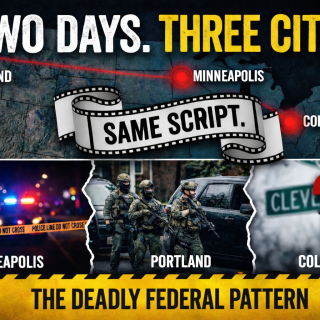Early twenty-first century’s continuing contradictions
With Franklinton’s increasing geographic and structural isolation came population loss: from 36,000 to 26,500 in 1950, 15,000 in 2000, and 8,132 in 2017. Government policies at all levels had negative impact which the remaining residents struggled to combat or mitigate. Redevelopment is uneven, inequitable, and incomplete. Most residents lack high school diplomas and live below the artificially low poverty levels. Almost all public elementary school students are eligible for free or reduced lunch programs.
On the one hand, the Franklinton Floodwall, finally completed in 2004, protects the area from very high crests of more than 30 feet. This released part of the area from building restrictions. Some commercial and industrial businesses grow, prompting community plans and creation of an Area Commission. As with other Columbus neighborhoods, the Area Commission is as much window-dressing as a point of community collaboration, coordination, and democratic action.
On the other hand, between 2009 and 2011, the Columbus Metropolitan Housing Authority demolished three housing projects in East Franklinton. This greatly reduced its population. By contrast, the City rehabbed only 16 homes though its Home Again program. Federal programs including the Housing and Economic Recovery Acts of 2008 and American Recovery and Reinvestment Act of 2009 funneled monies through the Neighborhood Stabilization Program. This contributed inconsistently to building, rehabilitation, and demolition though Habitat for Humanity and the Franklinton Development Association. It is very hard to assess benefit and loss through this alphabet soup of federal programs administered locally. This is the Columbus Way in action.
The result today: the City of Columbus, local boosters, and the media imagine a new Short North- gentrified residential and entertainment district. It is centered among a few blocks of bars, restaurants, oddly designed apartment buildings, and art galleries along the maze-like Gift, Town, Lucas, and Rich streets. Some developers purchase buildings to renovate to “retain the character of the neighborhood.” Their self-promotion makes these claims but their meaning remains very unclear. Actual construction clashes with aspirational and imaginary descriptions.
The unexamined but publicized faces of Franklinton
Columbus’ unfact-checked entertainment sites state: “Located just south of downtown Columbus across the Scioto River, you’ll find the historic neighborhood of Franklinton.” There is no description or detail; the “it” remains unspecified. The fictions continue, “This resilient, creative community is both diverse and united, and it is passionate in its mission to provide an affordable neighborhood and resources to its residents. Franklinton is home to attractions and experiences big and small, with business owners drawn to this community for its supportive nature.” (https://www.experiencecolumbus.com/neighborhoods/franklinton/)
Lists of a handful of bars; two museums ponderously on the downtown border; Gravitas, an unaesthetic, inappropriate, sprawling apartment complex, and a small “arts district” with a single street address follow this set of only partially true rhetoric.
Unmentioned, in 2021, Franklinton ranks as the most dangerous area in Columbus. With a population of 7,306, it has a 60% higher than average crime rate. The area reports 805 violent crimes per 100,000 compared to the state average of 293, 274% higher. Franklinton also has the lowest life expectancy in Ohio. In 2021, the Health Policy Institute of Ohio reported an average length of life of 60 years, 29 years less than the highest ranked country. Infant mortality ranks high, birth weight low. 13.2 per cent of residents lack health insurance compared to 9 per cent across the county. Not quite half of residents qualify for public healthcare plans, compared to 31 per century across the county.
This leads the Columbus Dispatch to conclude in its never copy-edited rhetoric, “As Franklinton experiences rebirth, some worry about being left behind.” (Eric Lagatta, Nov. 3, 2020). Uninterested in exploring the critical connections that link “rebirth” and “left behind,” this headline points to their simultaneity and inseparable interconnections. Clarity reaches its outer limits with “not all who live in Franklinton . . . share the same experiences.”
Speaking to two residents, the reporter notes that one is involved with “growing arts scene,” “trendy establishments”—which are brew pubs, “vibrant public arts,” “swanky apartment buildings,” and “lively festivals,” with almost no examples. This somehow constitutes “a momentous rebirth for Columbus’ oldest neighborhood. Franklinton was shaped by blue-collar workers—thousands of whom still work in Franklinton’s industrial corridor on McKinley Ave, according to the McKinley Avenue Employers [not employees] Association—but one that has also struggled with poverty, transiency, and vacant housing.” (italics added)
Gangs spilling over from the Hilltop, drugs, robbery, and violence also go unmentioned. From the 1990s, Franklinton’s heroine and crack cocaine drug and crime scene were likened to the “wild, wild West.” The reporter confuses population totals over time, selective and incomplete redevelopment, and “rebounding as a new generation of renters and homeowners show interest in the area.” Typical of Columbus, he has no sense of reliable sources or chronology. A 2020 “state of the city” speech by outgoing Mayor Michael Coleman figures prominently. This is no substitute for research.
After briefly noting problems, the 2020 article abruptly shifts to “‘A wonderful place to be an artist.’” The example is an artist who moved from her parents’ Upper Arlington home to Franklinton but unemployment and the pandemic forced her to return home. She rents a studio but does not live in Franklinton.
The contradictions magnify in the words of the former head of the Franklinton Development Association, 2002 to 2016. Jim Sweeney “used affordable housing grants to bridge the gap between the cost of construction of a house and its final appraised value.” Confusing redevelopment of existing housing and development of new, he “said he hoped to drive up the housing values, giving financial incentives to owners to improve and maintain their homes, eventually attracting higher-income residents. His goal was to create a mixed-income community to attract more retail options, and, perhaps one day, a grocery store”—perhaps one day.
Sweeney concludes, “When I first got there, there was a since of hopelessness, a stigma.” In 14 years, he “oversaw 150 units—both houses and apartments—rehabbed for renting and ownership. ‘We tried to change the stigma.’” But apparently not changed the realities of life on the ground. This is the Columbus Way: promoting development that favors private, not public interests, with capital investments and empty slogans.
Residents respond to Sweeney and the City, “‘I don’t want to be priced out.’” “Gentrification concerns seem to weigh on neighborhood leaders, who speak of a desire to pave an accessible path to home ownership by fostering access to subsidized housing and both public and private loan programs.” Neither the public nor private programs meet these needs. Development and redevelopment translate into very small numbers of units of any kind. The contradictions multiply.
The clash between an active housing market for upper-income buyers and renters, and a much less active lower-income apartment does not benefit Franklinton families. Few programs target middling-low income households with children.
Since 2000, the Vacant and Abandoned Property Program helped to get buildings abandoned for years and burned multiple times finally demolished. Vacancies resulted from intergenerational inheritance of homes literally falling down in addition to secretive large investors from California, New York, and Florida. More than 400 structures were lost by such destructive forces.
At the same time, the Franklinton Development Association built single-family homes and rented land in a variety of arrangements. Families from outside Franklinton dominate those options. For the most part, new housing does not benefit those from the neighborhood. These homes and rental units actually eliminate most “low income” families, unless they are formally labeled “low income.” That is itself a distorted classification that does more harm than good.
For example, Columbus deployed the Home Again program that aimed, rhetorically at least, at encouraging homeownership. In practice, it was riddled with contradictions and proved unworkable. Properties were secured from people fleeing the area for the suburbs. In some cases, vacated houses were rented to relatives of gang members. Continuing residents deem these houses “the slums of our block.” Sometimes they refer to the “colonization” of their streets: “30 somethings moving in until they have kids four or five and then they leave the neighborhood after they’ve gotten a great deal and sell at higher price.” Some move from Home Again to Franklinton Development Agency, selling and then buying more without contributing to the neighborhood. They tend to settle in Grandview or Bexley as their children reach school age. The schools are one stimulus to move; fear of the neighborhood is another.
As in other parts of Columbus, well-intentioned efforts are defeated by inadequate zoning codes that are not enforced. This is another aspect of the Columbus Way. The City ignores code enforcement. For its almost one million population, Columbus employs seven inspectors. They cannot respond to complaints.
The City does not consider assessing cumulative damages for repeated infractions or significant fines. As in other areas, a few landlords account for a high proportion of all complaints. But their cumulative infractions and legal liabilities are not taken into account. Landlords accept small, inconsistent penalties as “costs of doing business.” There are no time limits on the duration of vacancy. Apartment buildings are too hard to inspect. Public nuisances are too difficult to shutter. The City and Ohio Department of Transportation do not perform required roadside maintenance.
Neither mayor, City Council, nor relevant departments see these as problems worthy of their attention in a city without representative government and with financial contributions to candidates for office un- or under-reported. So many solutions to protect neighborhoods and their residents go undiscussed. Residents’ suggestions and requests are seldom acknowledged.
Truths and consequences
Born in contradictions of settlement and development, farmland and flood plain, Franklinton continues to be trapped in the contradictions of its history, geography, economic opportunities, and a host City that never functions for the public or with a vision of the city as a whole. The contradictions of the City exacerbate and exaggerate those of history, geography, nature, and economics.
Harvey J. Graff on Columbus
“Columbus’ identity crisis and its media”
“Columbus city government is undemocratic and disorganized: It’s 2021 and we need a revolution”
“Columbus searches for its Downtown with historical, urbanist, and developers’ blinders”
“Columbus, Ohio, searches to be a city: The myth of the Columbus Way”
“Columbus isn’t Cowtown or Silicon Valley Heartland; it’s the lawless, wild-wild-Midwest”
“In the Columbus Way, Columbus residents have no rights,” forthcoming
--------------------------------------------------------
Harvey J. Graff is Professor Emeritus of English and History at The Ohio State University and inaugural Ohio Eminent Scholar in Literacy Studies. Author of many books on social history, the history of literacy and education, and interdisciplinarity, he writes about the history and contemporary condition of higher education for Times Higher Education, Inside Higher Education, Academe Blog, Washington Monthly, Publishers Weekly, Against the Current; Columbus Free Press; and newspapers. Searching for Literacy: The Social and Intellectual Origins of Literacy Studies is published by Palgrave Macmillan this summer. He thanks Franklinton’s Rebecca Hundley for her information and personal commentary.



